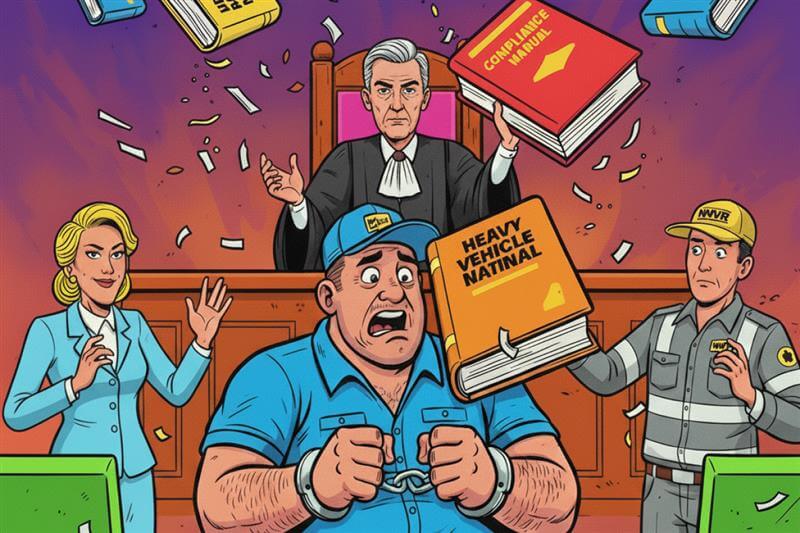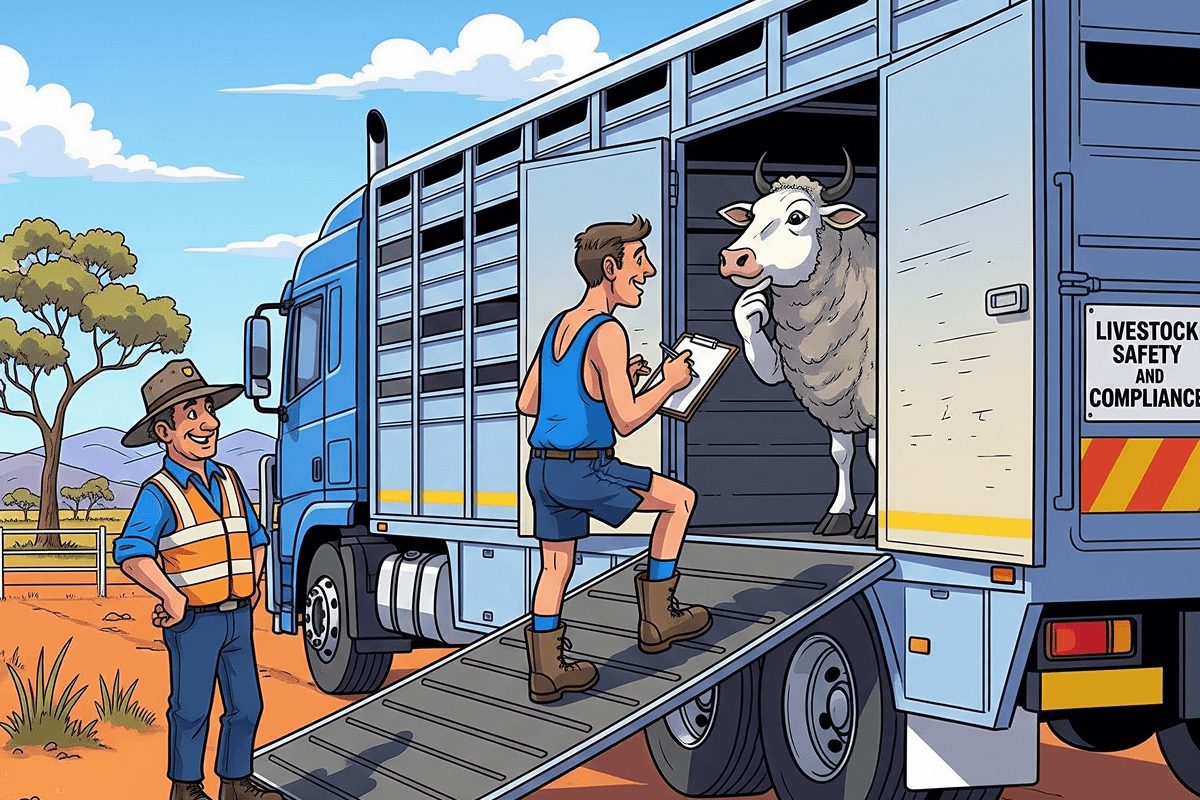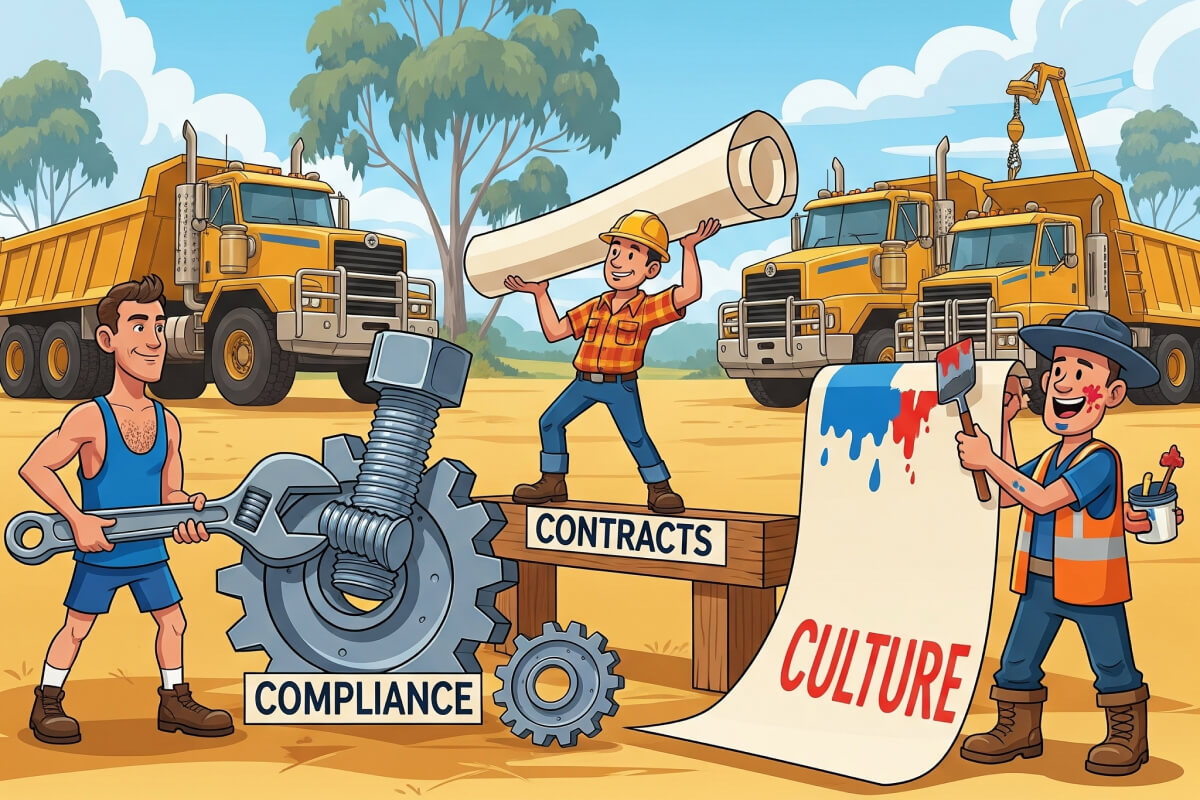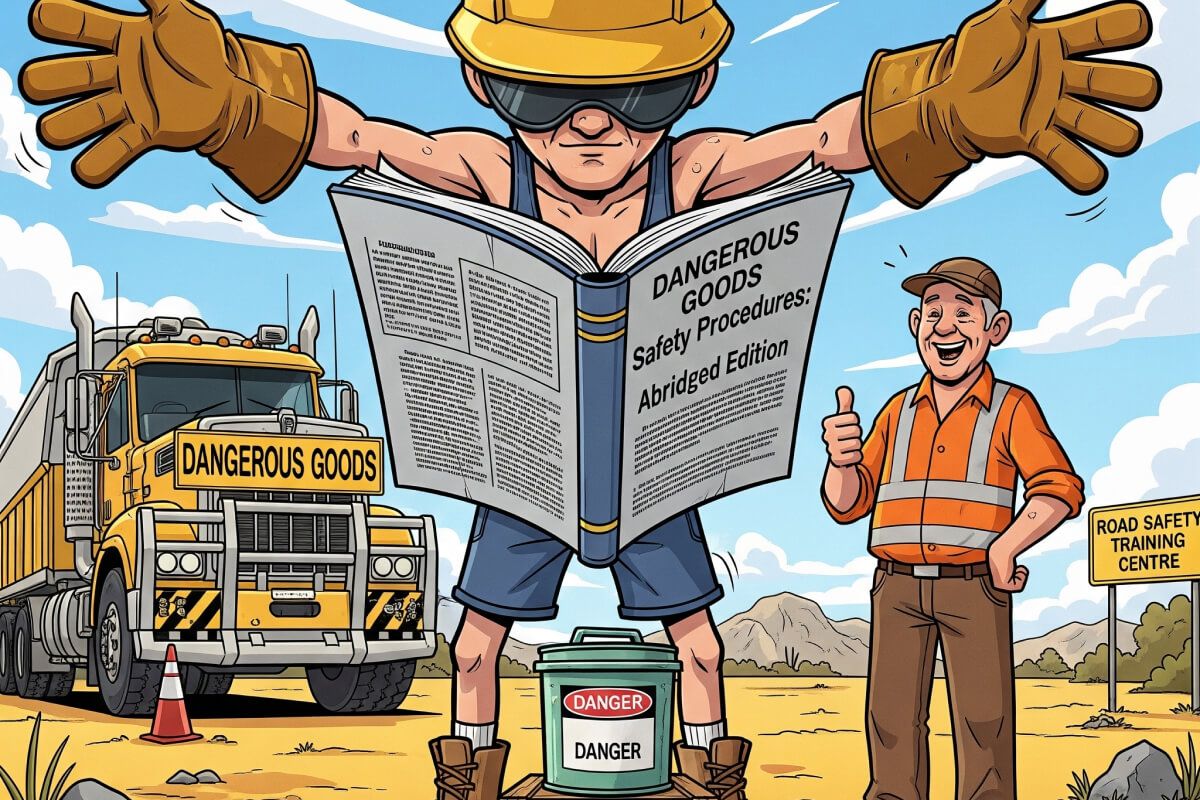
In Episode 15 of Risky Business on Big Rig Radio, I catch up again with my co-host Craig Forsyth to dig into a topic that keeps coming up knowing your numbers.
We break down the real costs of running a truck, the impact compliance has on your bottom line, and the hidden drain of unpaid time that too many in the industry are expected to just wear. If you’re a driver, owner-driver or transport operator trying to make sense of the numbers and stay ahead, this one’s worth a listen.
You can listen to the full episode here:
| Listen to the full episode on | ||
| Spotify | Soundcloud | Apple Podcast |
Highlights from the Week
We started the show reflecting on a busy week, including attending the Livestock Bulk and Rural Carriers Association conference in Canberra. It was fantastic to see so many vendors (over 40) and attendees (over 400) come together. We were there representing Hubfleet, and it was particularly gratifying to note that three of the finalists for the Young Driver of the Year competition were Hubfleet users. It’s clear that the benefits of electronic work diaries like Hubfleet are becoming more widely understood, making compliance easier, especially if you’re doing the right thing.
Importance of Compliance and Safety
Transport is indeed a risky business. As the backbone of Australia’s economy, contributing significantly to the GDP and employing over a million people, its importance is undeniable. However, it remains the second most dangerous industry in Australia, with worrying fatality rates. Sadly, behind many risks lies unfair and unsustainable pay. This pressure drives operators and drivers to take dangerous shortcuts – longer hours, skipped breaks, delayed maintenance, and overwhelming pressure to cut corners. This isn’t just about avoiding fines; it’s fundamentally about safety – making sure everyone gets home safe.
Industry Pricing and the Race to the Bottom
Despite growing demand, rates haven’t kept pace with rising costs, leading to a “race to the bottom“ where operators undercut each other just to survive. This predatory behaviour sadly increases when people are desperate. We’ve seen unbelievably low rates for routes between major capitals, sometimes even lower than the cost of just running the truck. This situation highlights a cycle that has persisted for decades – the issue of fair and equitable rates.
Understanding Operational Costs
A core problem is that operators aren’t always paid for their investment or their time, especially subcontractors. This leads to continually eroding what they started with until they have nothing, contributing to churn in the industry and impacting things like the used truck market.
Why Knowing Your Numbers Matters
A key part of tackling this is knowing your costs. It’s not just about what you get paid, but what it costs you to operate. If you’re not on top of this, you can slowly run down your assets without even realising it, especially when you’re busy. Profit shouldn’t be a dirty word; it needs to be included in business plans, going beyond just cost recovery.
Expert Insights from Michael Gallagher
To help unpack the “Knowing Your Numbers” topic, we were joined by Michael Gallagher from Tax for Truckies. Michael, a highly qualified and experienced chartered tax advisor, shared invaluable insights. He stressed that you can’t operate without profit or for minimal wages, as drivers give up valuable personal time. He acknowledged that while some businesses have sophisticated accounting software, many small operators might still be using “shoe boxes”. However, with Single Touch Payroll requirements, accurate records are becoming essential, especially for those with employees.
Break-Even Point Analysis
Michael introduced the concept of Break-Even Point Analysis. This is a crucial tool to check if your charge rates are sufficient to sustain your business. It involves breaking down your costs into fixed costs (incurred regardless of driving, like finance, insurance, licences) and variable costs (incurred when driving, like fuel, maintenance, tolls, labour). By using a simple formula (Fixed Costs / (Sales – Variable Costs)), you can calculate the sales needed to break even. This helps you understand your cost per kilometre, build a budget, and identify areas for cost reduction. Michael mentioned that there are many online tools available to help operators perform this analysis themselves.
Business Planning and Structure
He also touched on essential aspects of business planning, including defining objectives and conducting a SWOT analysis (Strengths, Weaknesses, Opportunities, Threats). Tax planning is another vital area, as saving on tax means more take-home pay and less pressure to increase rates. Michael briefly discussed structuring your business (sole trader, company, trust) and utilising superannuation contributions as potential tax-saving strategies.
Salary Sacrifice for Super
We also received a question about salary sacrifice for super and how that works for employees. Michael explained that salary sacrifice provides the tax benefit weekly by reducing taxable income, achieving a similar result to making personal contributions and claiming a deduction, but with regular benefit. He also highlighted rules around accessing superannuation at age 60 and 65, including drawing down or accessing the full balance, even mentioning the possibility of retiring briefly and returning to work. He also touched on Self-Managed Super Funds (SMSFs) as an option for those who want more control over investments or wish to buy property within the fund, but noted it’s not suitable for everyone.
Tools for Deductions and Record-Keeping
On the topic of deductions and record-keeping, Michael recommended looking into digital software like Hubdoc (which integrates well with Xero). These tools allow you to photograph receipts, storing them digitally and making it much easier for you and your accountant to manage expenses and have them ready for audits. He also discussed the complexities of claiming meal allowances, stressing that even if you receive an allowance, you must prove you incurred the expense, particularly if the allowance isn’t itemised separately on your pay slip. We even came up with a potentially smart way to track meal expenses by using a separate bank account dedicated solely to food purchases on the road.
Moving Beyond “Shoe Box” Accounting
We discussed the need for businesses, particularly small operators, to move beyond “shoe box” accounting. Using software like Xero can provide real-time reporting, allow for comparisons, manage payroll (including Single Touch Payroll and superannuation), and integrates with other systems. It helps avoid getting into trouble with tax obligations, which can be severe if not managed properly. Having a good accountant who engages and chases you is crucial to staying compliant and out of trouble.
Hidden Compliance Costs
Beyond financial costs, we delved into the hidden costs of compliance. This includes unpaid time spent on things like inductions (for your company or clients), pre-start checks, fatigue paperwork, admin time, audits, and accreditations. These are real costs that need to be factored into pricing.
Unpaid Waiting Time
Another major hidden cost is unpaid waiting time. We discussed how frustrating it is to wait around at depots or distribution centres without getting paid, especially compared to hourly-paid employees doing the same job. This isn’t just a financial issue; it’s a significant safety risk. Research by Dr. Michael Quinlan shows that every 15 minutes of detention increases crash risk by a staggering 6.2%. Waiting time disrupts schedules, causes fatigue, affects drivers’ personal lives, and contributes to burnout and people leaving the industry.
Enforcing Paid Waiting Time
We debated the complexities of enforcing paid waiting time, noting that while it would ensure drivers are compensated, it might incentivise companies to eliminate waiting altogether, which presents its own challenges in logistics. The issue also raises questions about delays caused by the driver and how those would be managed.
Low Pay, Safety, and Industry Sustainability
Dr. Michael Belzer’s research further reinforces the link between low pay, unpaid time, and safety outcomes. His work, including the concept of “sweatshops on wheels,” suggests that a 1% increase in pay could lead to a 3.16% reduction in crashes. He argues that the industry often faces a “pay shortage,” not necessarily a “driver shortage,” as many drivers are paid well per kilometre but work excessive hours to achieve a decent income. Unpaid time forces operators to absorb hidden costs and shift risk down the chain, pressuring businesses to cut corners.
Final Thoughts
Ultimately, when operators aren’t paid for all the time their vehicles and drivers are engaged, it undermines sustainability, safety, and the ability to attract and retain good workers. Sustainable rates, enforceable contracts, and proper time recognition are not luxuries; they are essential for a healthier, safer industry.
It’s clear that waiting time, in particular, is one of the biggest problems in our industry right now. It’s time the industry stopped expecting operators to bankroll supply chains by bearing the costs and risks of unpaid hours. By knowing your numbers, understanding all your costs (including the hidden ones), and valuing time, operators can advocate for fairer rates and contribute to making the industry safer and more viable for everyone.
Thanks for listening or reading. We’ll continue these vital conversations on “Risky Business”.
Take Control of Your Compliance and Costs with Hubfleet
Hubfleet makes it easier for transport operators to stay compliant, track unpaid time, and manage fatigue – all while streamlining admin and saving money. With features like electronic work diaries, real-time reporting, and easy record-keeping, Hubfleet supports smarter decisions and safer roads.
Sign up for a free trial today and start making your time count.







